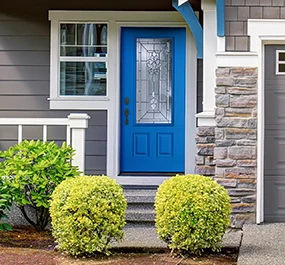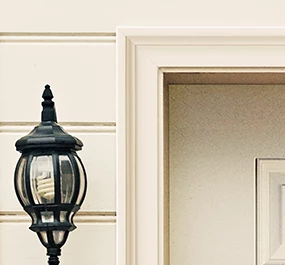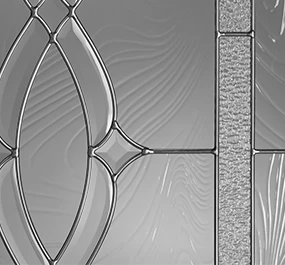LEED (Leadership in Energy and Environmental Design) is a widely used, internationally recognized certification system centered around making environmentally friendly and green building decisions. A LEED certified building signifies an energy-efficient, green building process which also has a lasting impact on important goals like a lower carbon footprint, improved indoor environmental quality, and increased social equity. Through these goals, LEED is designed to support the overall health and safety of people at home or work.
LEED is a comprehensive process and ranges from initial design and construction through building operation and performance. Therefore, understanding LEED requirements can take some research, as the certification criteria cover various aspects of the building process and material choices. To help start the process, we’ve compiled a guide of elements to be mindful of when it comes to LEED requirements, as well as information about how selecting fiberglass doors as a material may help build towards certification.
Benefits of LEED
Before diving into LEED requirements and certification, it’s important to understand the benefits of LEED. As mentioned, LEED is designed with sustainability and health in mind. Let’s take a look at some of the key areas that LEED certification can improve.
Environmental Benefits
When building to LEED standards, buildings have a wide range of environmental benefits, such as lower carbon emission, less water consumed, and less waste. Because of the emphasis on sustainability, these environmental benefits will be seen for years after the project is complete.
Economic Benefits
LEED standards can provide savings as well. The economic benefits are products of environmental benefits, such as decreasing the cost of energy, water, and waste. In addition, sustainability is top of mind for consumers, meaning that businesses who earn LEED certification can improve their brand and lead to improved financial performance. The same can be said for residential buildings, as LEED certification has been shown to decrease vacancy rates.
Health Benefits
At the core of LEED requirements is the intent to improve the overall health and safety of those spending time inside. LEED spaces improve indoor air quality, provide more natural light, and are free of harmful chemicals.
Social Benefits
Besides negating health risks, LEED requirements also promote benefits for occupants—like comfort and wellbeing—through thoughtfully designed surroundings. For example, more natural light and easy access to the outdoors should have a positive effect on work productivity, and energy efficient homes are more temperate, comfortable spaces for inhabitants.
Green buildings can also have a positive impact on surrounding communities and cause a more equitable distribution of resources—particularly because they may be built in locations that encourage the use of public transportation, have a reduced use of resources required to maintain them, and lower community exposure to toxic chemicals.
LEED Requirements for Certification
LEED requirements are the environmental requirements that building projects must meet to achieve a LEED certification. These projects can range from new construction to building updates—LEED is for all building types and all building phases, which means there is a specific framework and LEED requirements for each project.
While there are different LEED requirements for each type of project, you can potentially increase your LEED certification score by focusing on the following concepts when planning a project or building:
- Energy/atmosphere
- Indoor environmental quality
- Regional priority
- Integrative process
- Location/transportation
- Building materials and resources
- Natural, sustainable building site
- Water efficiency
The latest LEED requirements, v4.1, place specific emphasis on projects that focus on human comfort and health, stating that a building should prioritize “the most important asset of the building: human beings.” This includes a focus on social equity, including prioritizing accessibility and inclusiveness within a building’s communities.
Focusing on the concepts above can help you meet and exceed LEED requirements, and the minimum in the certification process is as follows:
- Be in compliance with environmental regulations and standards
- Meet the threshold of floor area requirements
- Meet a building occupancy minimum
- Maintain a reasonable site boundary
- Be a permanent building
- Share energy and water usage data
- Have a minimum building to site area ratio
A LEED certification will add up to a total points score, depending on your project and how well you met the requirements. Buildings can earn up to 110 points, with 40 being the minimum threshold to earn certification. The levels for v4.1 are as follows:
Certified: 40-49 Points
Silver: 50-59 Points
Gold: 60-79 Points
Platinum: 80+ Points
How Fiberglass Doors Can Help
Fiberglass exterior doors may contribute to your earned points when seeking a LEED certification. As a LEED certification generally measures how energy-efficient a building is, fiberglass doors are one of the best ways to meet LEED requirements when it comes to exterior doors. Fiberglass doors are a poor conductor of heat and electricity, a feature that works with their superior insulative properties to minimize the transfer of heat between indoors and out- they are up to four times as insulating as a wood door. This means the amount of energy lost when using a fiberglass entry door will generally be minimal when compared to doors made of other materials.
As an ENERGY STAR Partner, Plastpro offers a selection of fiberglass entry doors that are ENERGY STAR Qualified. These doors in particular have been certified as energy-efficient through the National Fenestration Rating Council (NFRC) and have met the United States’s Environmental Protection Agency’s (EPA) energy efficiency guidelines. Check Plastpro doors and sidelites for labels with the Solar Heat Gain Coefficient—the door’s ability to resist indirect solar radiation—and U-Factor rating: how well a product keeps heat trapped inside. Plastpro’s fiberglass doors are also certified as compliant with LEED standards for indoor air quality.
When looking for the most energy-efficient door to help meet your LEED requirements, it’s also important to consider the climate of the area where you live. For example, a Solar Heat Gain Coefficient with a rating on the lower end might be better in a warmer climate, to keep the indoors cooler, and the opposite is true in a cooler climate. Climate, ratings (U-Factor, R-values, and Solar Heat Gain Coefficient), and LEED requirements are all important to factor in when deciding on the best entry door in terms of energy efficiency.
In addition to energy efficiency and a longer, less wasteful lifespan, Plastpro’s doors also align with LEED certification in regards to providing a healthy space, as the doors resist the buildup of mold, which is detrimental to indoor air quality and human health.
To find a Plastpro dealer near you, visit our Where to Buy page. For more information on Plastpro’s energy-efficient fiberglass doors, visit our website.



